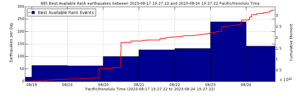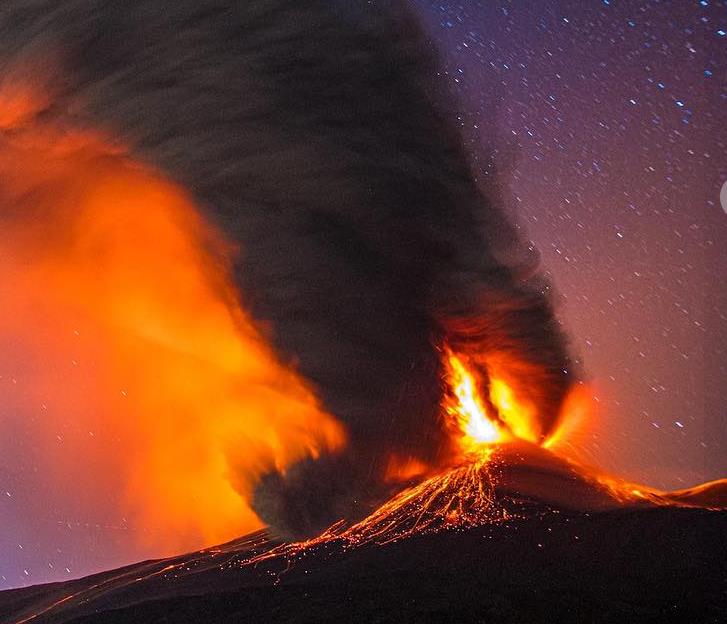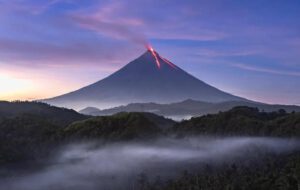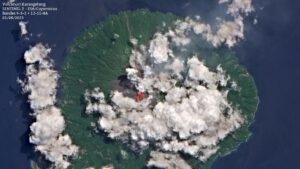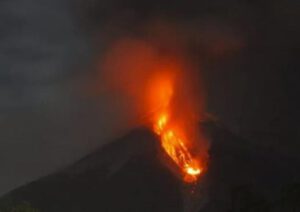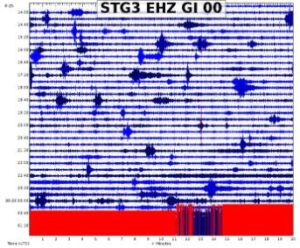 Heavy rains at the Santa Maria-Santiaguito volcanic complex triggered a lahar yesterday. The moderate mudflow initially followed the Cabello de Ángel stream and then merged into the Nimá I and Samalá rivers. Along with mud, volcanic rocks as large as one meter in diameter were carried by the water. Additionally, branches and tree trunks were swept away. The lahar generated a significant seismic signal that exceeded the scale and masked any volcanically-induced earthquake signals.
Heavy rains at the Santa Maria-Santiaguito volcanic complex triggered a lahar yesterday. The moderate mudflow initially followed the Cabello de Ángel stream and then merged into the Nimá I and Samalá rivers. Along with mud, volcanic rocks as large as one meter in diameter were carried by the water. Additionally, branches and tree trunks were swept away. The lahar generated a significant seismic signal that exceeded the scale and masked any volcanically-induced earthquake signals.
Lahars form when water mobilizes deposited volcanic ash on the volcano’s slopes. These mudflows have a high destructive potential and typically flow along drainage channels and riverbeds, but they can exit these paths and cause flooding. Survival chances are low if caught in a mudflow. Lahars are nearly as dangerous as pyroclastic flows, which can also occur at Santiaguito. The dome volcano on the flank of Santa Maria is active, building its lava dome. A viscous lava flow extends from the dome, flowing southwestward. Debris avalanches occur, and explosions propel volcanic ash up to 900 meters above the crater’s rim.
